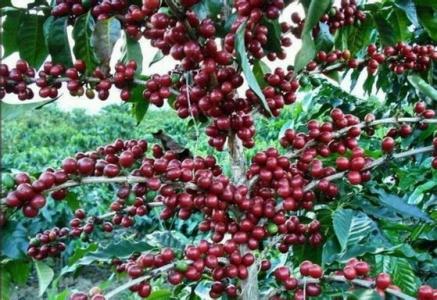How does the dry smell of Costa Rican beans come from? what kinds of manors come from?
What are the types of Costa Rican beans that taste dry?
1)Dry Fragrance: When grinding, you will feel the aroma, rich, with a unique vanilla fragrance.
2)Humid: Light floral and very weak tea aromas on the palate, slightly sweet blackberry fruit and slightly caramel, sour, slightly sweet and chocolate aromas.
Taste after entry: The taste is quite balanced and pure, the mellow feeling is good, very good smooth feeling, slightly sweet feeling, very long sweetness, fine taste slightly smoky feeling, not too bitter, overall taste down mellow feeling and aroma is better than the previous Westvalley, after adding milk, it will not feel lighter. If it is hand red, it is recommended that the brewing temperature be between 83-85 degrees.
Sunnyside, the highest point in Tarrazu, is the area that receives the first rays of sunlight at sunrise. It is called LIano Bonito of Leon Cortes! Bourbon, Geisha, Caturra and Catuai coffee varieties are grown on the estate and are treated with 100% water, honey and natural sun. The coffee beans of Estates de la Sana are processed by the renowned Don Mayo processing plant in Costa Rica, which is good at improving the quality of coffee and retaining its uniqueness, i.e. the different flavors caused by the respective microclimates such as altitude, soil, rainfall, temperature, etc., in order to grow, harvest, process and export high-quality coffee in harmony with the environment. Shenhua Manor uses very strict standards to control the cultivation environment and processing process of coffee. It is very strict! Maria Auxiliadora Bonilla, daughter of the farm operator, is a barista and the 2013 WBC Costa Rica champion. They have a professional coffee cup testing laboratory. Every batch of green beans is tested by cup testing to confirm that the flavor is impeccable!
In 1931, it was exported from Geisha Mountain in southwest Ethiopia to Kenya, Tanzania and Costa Rica in obscurity. It was transplanted to Panama in the 1960s. After nearly half a century, it was amazing. It defeated the ever-winning varieties such as Boben, Kadulla, Kaduai and Tibika, and won the first prize in the 2005, 2006 and 2007 Panama National Treasure Bean Cup Test Competition. In 2007, the International Famous Bean Cup sponsored by the American Fine Coffee Association (SCAA) won the championship again, and the bidding price was sold at 130 US dollars per pound, setting a record for the highest price in the history of competition beans. It is reported that the subsequent Panama National Treasure Bean Competition will be divided into two groups: Rose Summer and Non-Rose Summer.

Important Notice :
前街咖啡 FrontStreet Coffee has moved to new addredd:
FrontStreet Coffee Address: 315,Donghua East Road,GuangZhou
Tel:020 38364473
- Prev

Description of Flavor in Coffee Bean producing areas in Latin America introduction to Variety treatment of planting Environment
Description of the Flavor of Coffee beans in Latin America Flavor description of planting Environment Variety treatment method Brazil's coffee, banana and cassava output ranks first in the world, soybean output ranks second in the world, and cocoa output ranks third in the world. A large number of high-quality beef and mutton produced in Argentina are famous in the world. The inland rivers of Latin America are rich in freshwater fish, with more than 2500 and 3000 species. The coasts of Peru and Chile
- Next

Introduction to the varieties of manor flavor description by grinding scale treatment of Java coffee beans
Description of the Manor Flavor of Java Coffee beans in Indonesia (Indonesia) was the first colony (Dutch) to start growing coffee trees. Indonesia's archipelago is the world's largest producer of Robusta beans. This is called high-quality Arabica beans, such as Java and Sumatra. Java: coffee beans
Related
- Detailed explanation of Jadeite planting Land in Panamanian Jadeite Manor introduction to the grading system of Jadeite competitive bidding, Red bid, Green bid and Rose Summer
- Story of Coffee planting in Brenka region of Costa Rica Stonehenge Manor anaerobic heavy honey treatment of flavor mouth
- What's on the barrel of Blue Mountain Coffee beans?
- Can American coffee also pull flowers? How to use hot American style to pull out a good-looking pattern?
- Can you make a cold extract with coffee beans? What is the right proportion for cold-extracted coffee formula?
- Indonesian PWN Gold Mandrine Coffee Origin Features Flavor How to Chong? Mandolin coffee is American.
- A brief introduction to the flavor characteristics of Brazilian yellow bourbon coffee beans
- What is the effect of different water quality on the flavor of cold-extracted coffee? What kind of water is best for brewing coffee?
- Why do you think of Rose Summer whenever you mention Panamanian coffee?
- Introduction to the characteristics of authentic blue mountain coffee bean producing areas? What is the CIB Coffee Authority in Jamaica?

